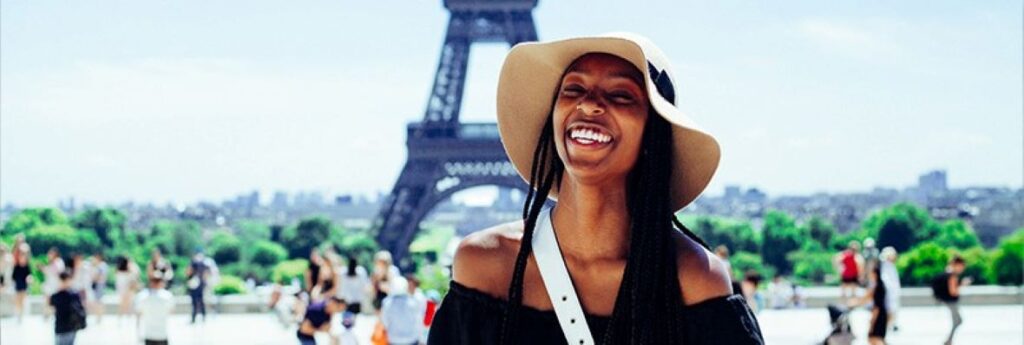Before the pandemic travel and tourism industry had seen significant growth in solo female travel and women-only tour operators – so it follows that when travel returns to normal, the segment is likely to be one of the first to bounce back. According to 2020-21 data by Condor Ferries, travel companies dedicated to woman-only customers have increased by 230% over the past few years.
Among them: Sisterhood of the Outdoors has guided hunting and fishing trips to women who love the outdoors; WHOA Travel, a boutique adventure company for women by women, offers adventures on four continents; Women’s Hiking Crew is a hiking community for women; and Finatical Flyfishing provides women-only worldwide fly-fishing trips, complete with female guides.
The travel experiences women are looking for today focus on learning new activities and reconnecting with nature and people.
Many viewers of the 2021 Olympic summer games who watched the debut of the female surfing competition were inspired to learn the sport. It is what 60% of the guests do at Costa Rica’s Kalon Surf, a luxury resort and surf camp.
“We have built an experience that helps our guests to relax and recharge by learning or improving their surfing in a beautiful, paradise-like setting full of comfort,” says Kjeld Schigt, founder of Kalon. “You spend every day in the ocean while having fun, having a smile on all the time and connecting with yourself and others again.”
More women are traveling solo but that doesn’t mean they are always exclusively travelling as a party of one. Sixty percent of female travellers who sign up for WHOA Travel’s classic adventures – group travel adventure tours with pre-set dates – arrive solo, meaning they arrive knowing no one. But by the time the program ends, they leave with a new set of friends – and a totally new sense of competence.
“When you face a challenge, like summiting Africa’s Kilimanjaro or trekking Iceland’s glacial terrain, and have these other women to lift you along the way, it forms an incredible bond that lasts,” says Allison Fleece, who co-founded the woman-focused adventure travel company in 2015 with fellow adventure enthusiast Danielle Thornton.
“It can be intimidating to take the plunge and sign up for these kinds of activities,” Fleece says. “But when you know you’re doing it with like-bodied or similarly aged women, you’re all the more encouraged and empowered.”
Self-care, or reconnecting with yourself, is a growing travel goal for women. Imagine staying at a retreat hidden in a nine-hectare jungle oasis in Costa Rica. Guests are 10 minutes from the beach, steps away from nature paths and a private waterfall and treated to meals crafted by a five-star vegan chef. Then pair it with a favourite activity: yoga. It’s what you’ll find at the Imiloa Institute.
Relinking with nature is another priority among female travellers. Saint Brandon is an ideal place for a digital detox. Located to the northeast of Mauritius, Saint Brandon is a paradise-like island country in the Indian Ocean well-suited for anglers, free divers, kite surfers, and nature lovers.
Risks & tips
Unfortunately, women of all ages must contend with certain risks on the road. Solo travel, for women and men, means taking some additional precautions.
Here are five essential solo female travel safety tips:
Bring a communication service that works
In addition to bringing a cell phone (which you should make sure works wherever you’re headed), a satellite phone or messaging device can be extremely important in remote areas of the world where there are no cellular networks. They can also save your life in an emergency or disaster where cellular networks become overloaded or disabled.
Research
Read maps before venturing out to a new place and be conscious of areas to avoid. Get detailed information on your destinations and find out which neighbourhoods have incidences of crime. Women should also be aware of major international hotels or key public locations along your itinerary where you can go if you feel unsafe.
Purchase a traveller protection membership
If you need to get out of a tight situation, your insurance company isn’t going to do it. If you get hurt and need to be medically evacuated, or need to escape civil unrest, having coverage can save your life (and tens or even hundreds of thousands of dollars).
Alert friends and family to your itinerary
Do this before departing for your trip. Let people know when they should expect to hear from you next. Also enroll your trip with the nearest your local embassy.
Brush up on practical safety tips
Avoid telling strangers that you are travelling alone. Try not to establish patterns such as leaving or returning to your hotel at the same time every day. Maintain “situational awareness” and avoid walking alone at night. Do not stay on the first floor of a hotel or hostel. When using public transportation (train, bus, or ferry) in an underdeveloped country, if possible, ride in the highest class available.
Other simple preparations include carrying a whistle; carrying a small flashlight; carrying or wearing comfortable shoes; and carrying an ID, a small amount of cash, and a credit or ATM card on your person and not in your purse in case of theft.
This article was written by Stephanie Diamond, a veteran international human resources expert who is currently VP Human Capital Management for New Hampshire-based Global Rescue, which provides medical, security, evacuation, and travel risk management services to international members.

